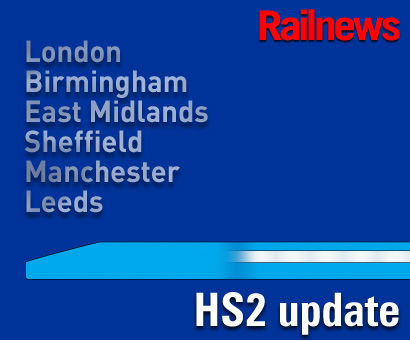[Revised version, 7 August 2018]
THE chair of the national infrastructure commission says £43 billion should be spent on local transport networks in areas to be served by HS2, so that the most can be made of the scheme.
Former Network Rail chief executive Sir John Armitt said the money would be needed to avoid the possibility of ‘inadequate transport links’ connecting with the new line.
The likely cost of all the planned phases varies according to the source, and also whether rolling stock is included, but one recent estimate by the Cabinet Office is reported to have suggested a total of £80 billion – without additional funding for related transport. The official total for HS2 itself is currently £56 billion.
In an article in the Sunday Telegraph, Sir John said: “HS2 is the most significant investment in the capacity and connectivity of our transport networks for a generation or more. The potential impact could extend 100 years or more, and its upfront costs should be considered in that context.
“But this also means we cannot simply construct a new high speed rail line and leave it at that: to get the biggest bang for our buck we need to think about the whole journey.
“All this would mean the UK’s cities outside London receiving a £43 billion boost in funding up to 2040.
“Recent reports suggest that HS2 Ltd has spent £4.1billion before construction and since 2009. With £1.6 billion of this said to be for requisitioning land and property, time will tell whether this is the right level of investment – if indeed the figures are correct. But as with any project keeping a keen eye on the figures is key.”
He explained: “In July we published the UK’s first-ever National Infrastructure Assessment, looking at how to best meet the country’s infrastructure needs over the next three decades and across a range of sectors including transport, energy, digital technology, flood risk management, waste and water supplies. It includes support for Crossrail 2 increasing capacity between north and south London, but also for Northern Powerhouse Rail, which would improve links between HS2 and cities including Sheffield, Hull, Liverpool and Newcastle.
“But once people set foot on the platform and start their journey into the city they are visiting, they would currently face gridlock on the roads as they try to get from A to B. Alongside investment in rail links across the country, we need to better fund improvements to transport within our great cities.”
Some transport schemes have already been associated with HS2, such as a proposed extension of the Nottingham tram system to Toton, which is the site of a projected hub station to serve the East Midlands.
In a statement, the National Infrastructure Commission has since added: “We need to invest both in our intercity links and in urban networks which is why we have proposed devolving powers and funding to cities across the country helping to improve local transport connections.
“This, on top of HS2, Northern Powerhouse Rail and Crossrail 2 in London will help boost economic growth.”
The additional spending has prompted a quick reaction from opponents, such as Tory MP Cheryl Gillan, who represents Chesham and Amersham, She has consistently argued against the scheme, which involves a route through the Chilterns,
She told the Independent: “One of the major problems has always been that the connectivity is not there. But I don’t think anybody expected it to be twice the cost of HS2. This is money that wouldn’t be going into schools, the health service and making the existing railway system efficient and effective. It’s time for the government to re-evaluate from top to bottom whether this project is value for money for the taxpayer.”


